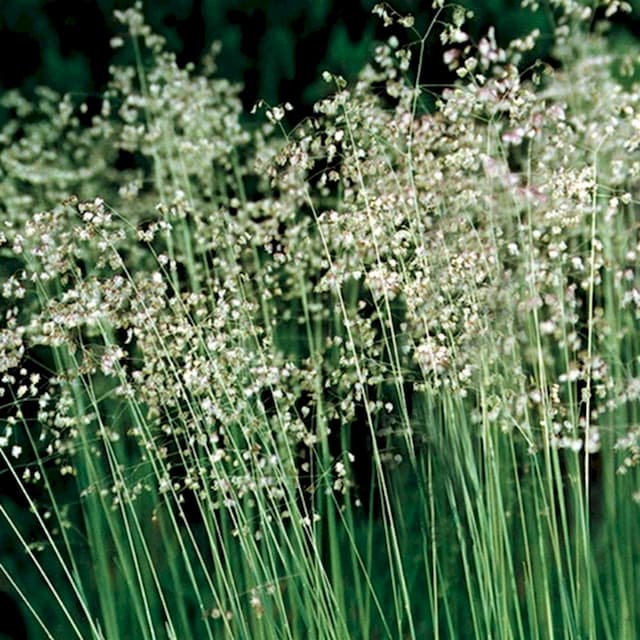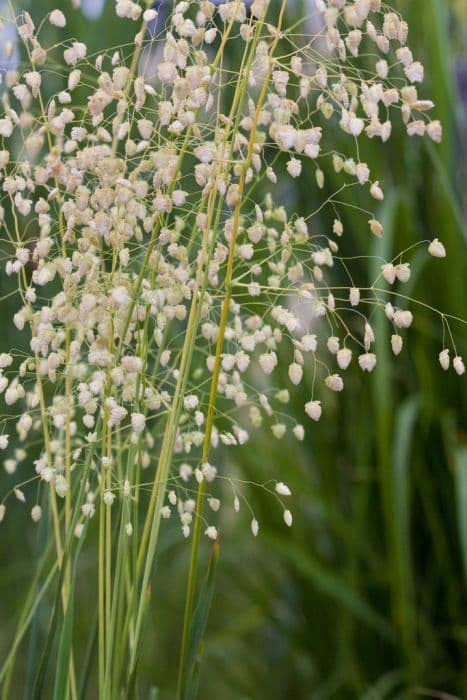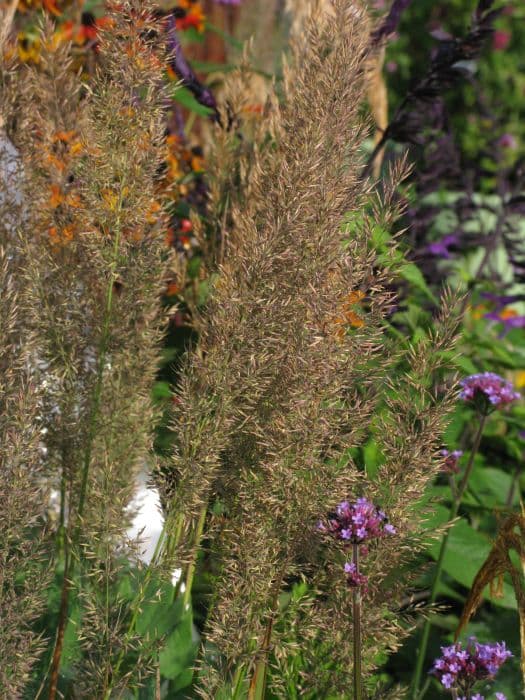Toetoe Cortaderia fulvida (Buchanan) Zotov
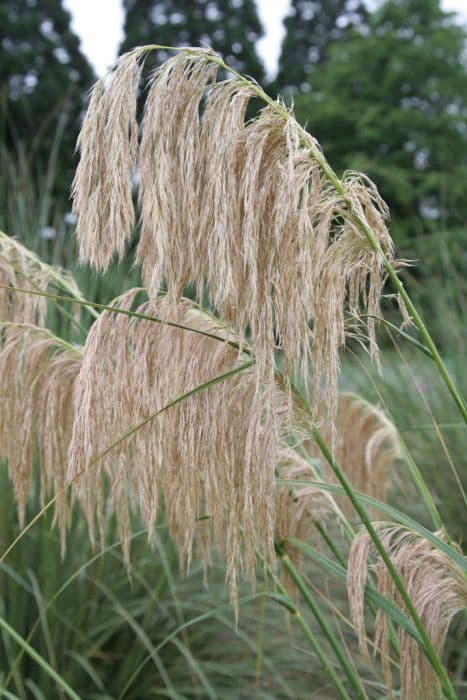

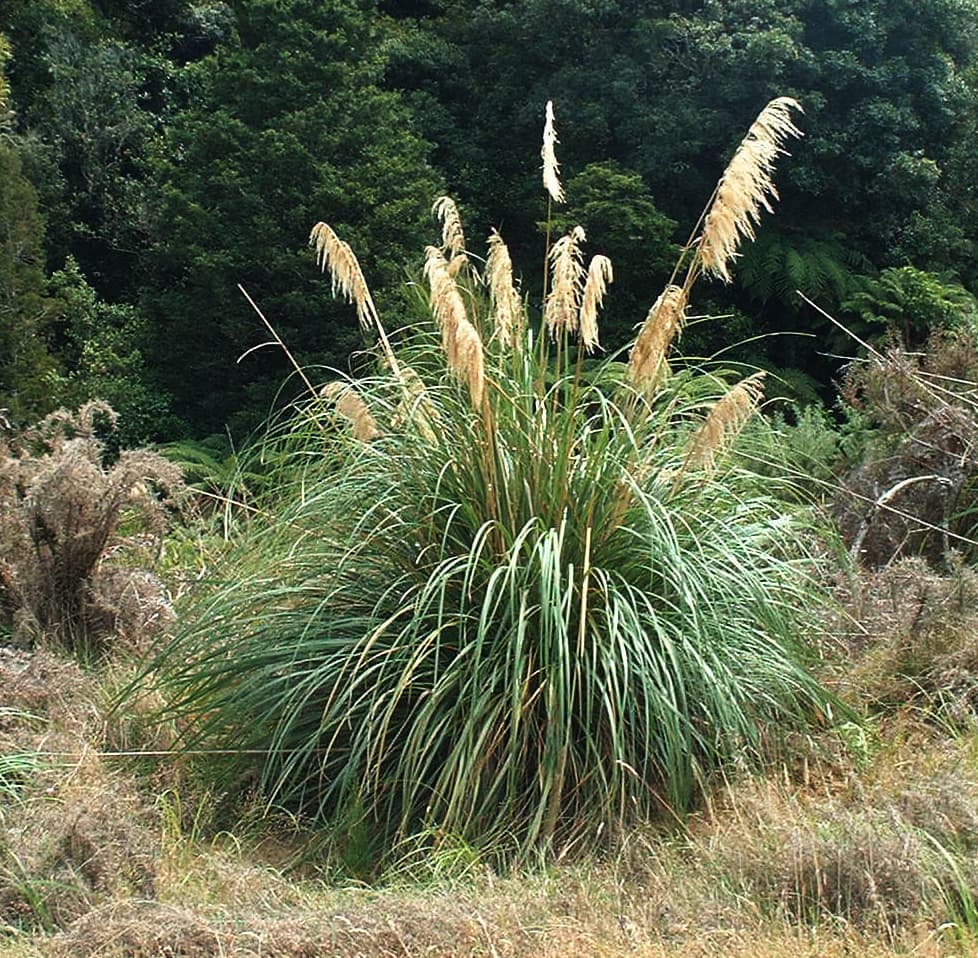
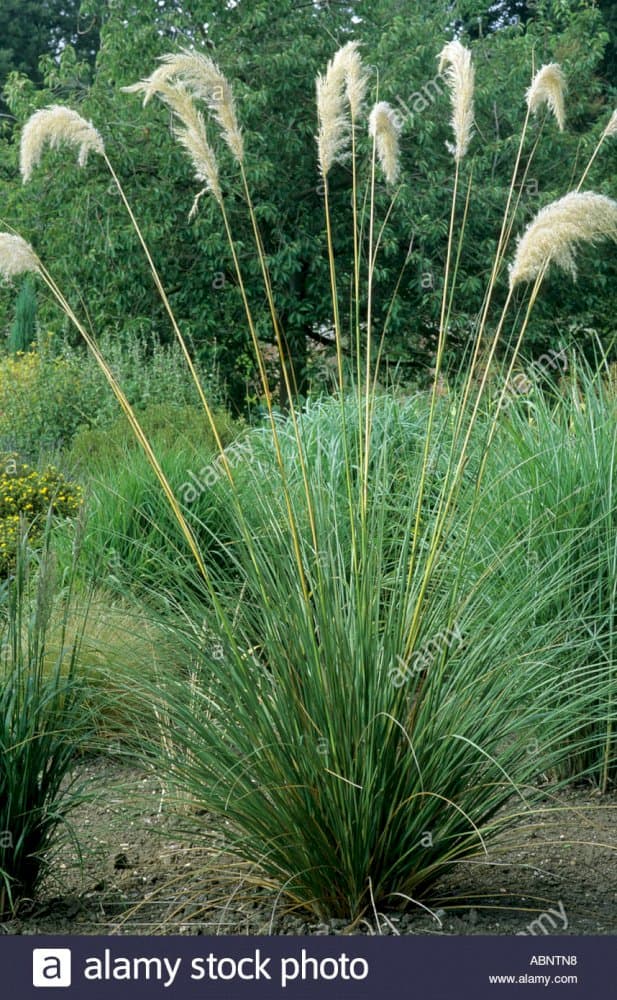
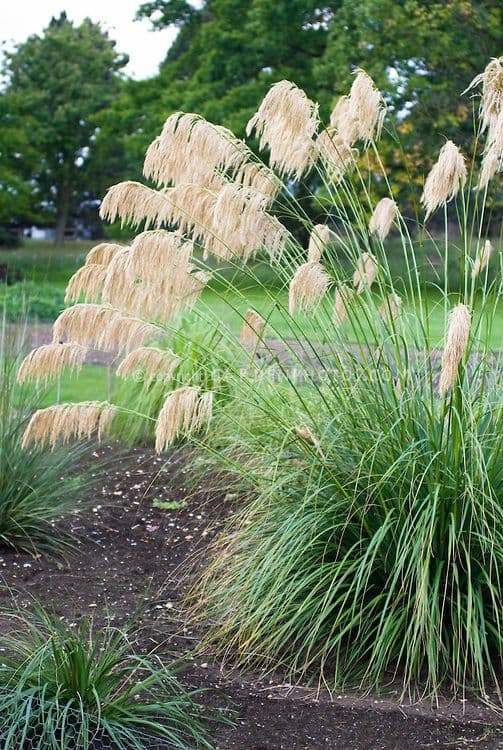
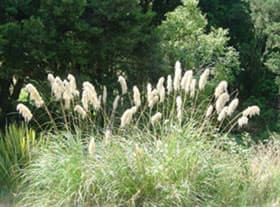

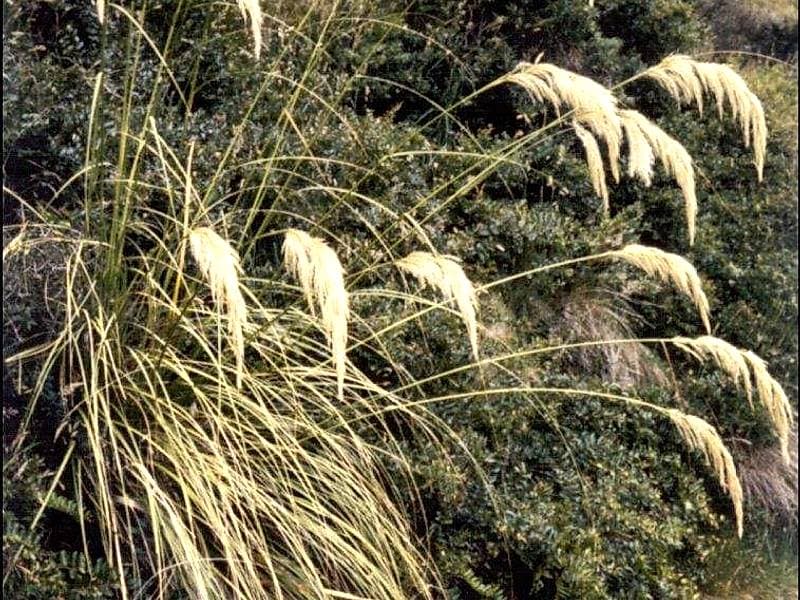
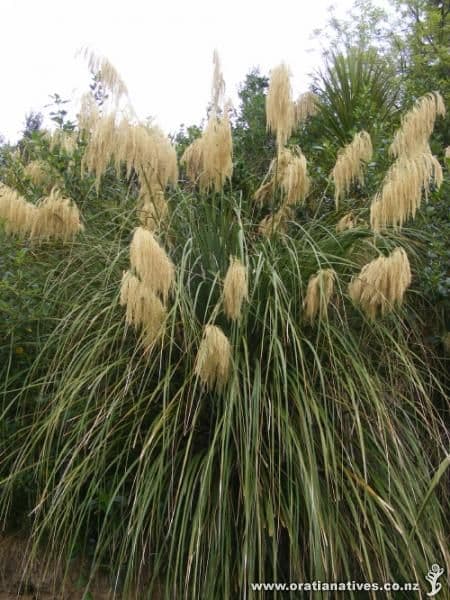
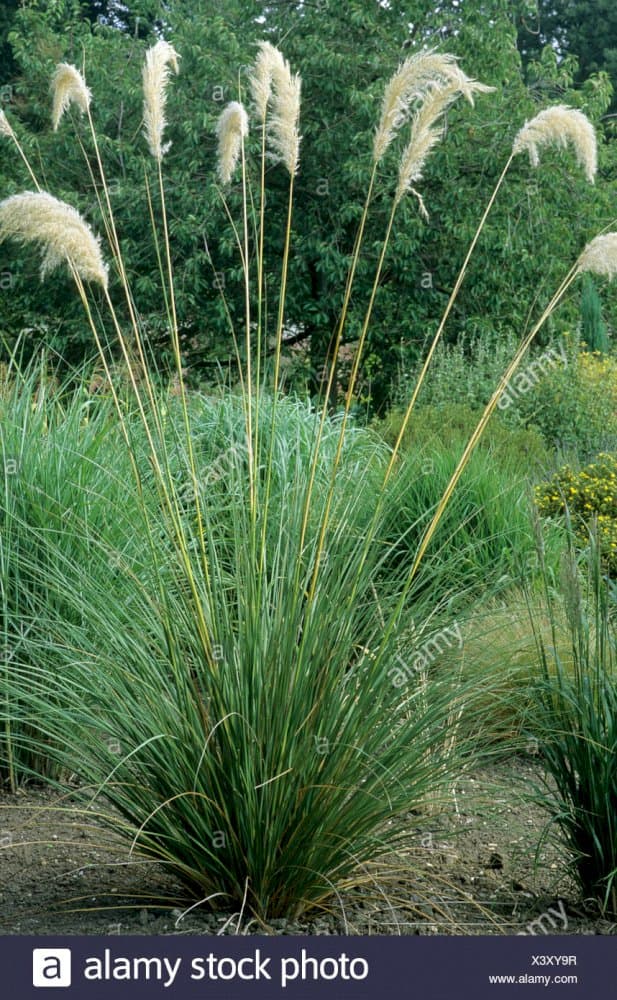
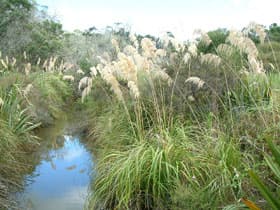
ABOUT
The plant commonly known as toetoe is recognized by its impressive, dense tussocks of arching, green leaves. These leaves are narrow and have sharp edges, which can easily cut skin if handled without care. During its blooming period, it produces large, feathery, plume-like flower spikes that rise above the foliage on sturdy stems. The flowers are usually cream to pale yellow in color and give the plant a particularly fluffy and striking appearance. As the flowers mature, they can become more of a straw-like color. The plumes add a strong visual interest and are often used in floral arrangements. The overall shape of the toetoe is a clumping mound, with the flowers creating a showy display that moves gracefully in the wind. The plant has robust, spreading roots that help anchor it firmly into the ground.
About this plant
 Names
NamesFamily
Poaceae.
Synonyms
Toetoe, Golden Tussock, Maori Rice.
Common names
Arundo fulvida Buchanan, Cortaderia richardii Zotov, Arundo conspicua Forst. f., Cortaderia conspicua (Forst. f.) Zotov.
 Toxicity
ToxicityTo humans
Toxsbury grass, commonly known as Toetoe, is not considered poisonous to humans, but like many grasses and plants with similar structures, its sharp leaves can cause physical irritation or injury. Ingesting parts of the plant is not typically associated with poisoning or toxic reactions. However, caution is advised as the plant's foliage can cause cuts or abrasions on the skin or eyes due to its serrated edges.
To pets
Toxsbury grass, known as Toetoe in pets, does not contain toxins that are harmful if ingested. However, it can still pose physical risks due to its sharp and potentially irritating leaves. Pets, particularly dogs and cats that might chew on plants, could experience cuts or abrasions in the mouth or digestive tract if they ingest the foliage. No specific symptoms of poisoning from Toetoe are typically observed, but physical irritation or injury may result from interactions with the plant.
 Characteristics
CharacteristicsLife cycle
Perennials
Foliage type
Evergreen
Color of leaves
Green
Flower color
Varies
Height
6-10 feet (1.8-3 meters)
Spread
6-8 feet (1.8-2.4 meters)
Plant type
Grass
Hardiness zones
8
Native area
New Zealand
Benefits
 General Benefits
General Benefits- Ornamental Value: Cortaderia fulvida, commonly known as toetoe, is often used in landscaping for its dramatic, large feathery plumes and tall growth, providing visual interest in gardens and parks.
- Erosion Control: Toetoe is effective at stabilizing soil and preventing erosion, especially on slopes and riparian zones owing to its robust root system.
- Habitat for Wildlife: The plant provides shelter and nesting materials for birds, and its seeds can serve as food for some wildlife species.
- Windbreak: Due to its height and dense growth, toetoe can act as a windbreak, protecting smaller plants and reducing soil desiccation.
- Privacy Screen: The density and height of toetoe makes it suitable for planting as a privacy screen, obscuring unwanted views and reducing noise.
- Cultural Significance: Toetoe holds cultural importance for indigenous peoples, such as the Māori in New Zealand, where it has been traditionally used for weaving and other purposes.
 Medical Properties
Medical PropertiesThis plant is not used for medical purposes.
 Air-purifying Qualities
Air-purifying QualitiesThis plant is not specifically known for air purifying qualities.
 Other Uses
Other Uses- As a privacy screen: Cortaderia fulvida, commonly known as toetoe, can grow to significant heights, making it useful for creating dense and attractive natural barriers for privacy in gardens and landscapes.
- Erosion control: Due to its robust root system, toetoe is effective at stabilizing soil on slopes or riverbanks, helping to prevent erosion.
- Dune stabilization: Toetoe's ability to withstand harsh coastal conditions makes it suitable for planting on sand dunes where it can help to stabilize the shifting sands.
- Windbreaks: Owing to its tall and dense growth, toetoe can be planted in rows to act as a windbreak, reducing wind speed and protecting more delicate plants.
- Bioenergy source: As a rapidly growing plant, toetoe has the potential to be harvested and used as a feedstock for bioenergy production, such as biofuel or biomass energy.
- Garden aesthetics: Toetoe's striking feathery plumes and foliage are commonly used in landscape design for their visual interest and to add texture to garden beds.
- Floral arrangements: The plumes of toetoe can be dried and used in floral arrangements, where they add height and drama to the composition.
- Wildlife habitat: Toetoe plants provide shelter and nesting materials for birds, as well as habitat for insects, contributing to biodiversity in the ecosystem.
- Craft material: The strong, fibrous leaves of toetoe can be used in traditional weaving, rope-making, and for crafting items such as baskets and mats.
- Sound barrier: Toetoe's thick stands can also help absorb and reduce noise pollution, making it a good choice for planting along roadsides or in urban environments.
Interesting Facts
 Feng Shui
Feng ShuiThe plant Toetoe is not used in Feng Shui practice.
 Zodiac Sign Compitability
Zodiac Sign CompitabilityThe plant Toetoe is not used in astrology practice.
 Plant Symbolism
Plant Symbolism- Resilience: Cortaderia fulvida, commonly known as Toetoe, is often associated with resilience due to its ability to thrive in harsh environments and withstand strong winds and poor soils.
- Protection: Toetoe's dense growth habit can act as a shelter against natural elements, symbolizing protection and safety.
- Adaptability: This plant symbolizes adaptability because it has a wide range of habitats and can quickly adjust to changes in its environment.
- Endurance: As Toetoe can live for many years, enduring seasons and climate changes, it represents endurance and the ability to persist over time.
 Water
WaterToadstool grass or pampas grass should be watered deeply to ensure moisture reaches the roots, with an average of about 1 to 2 gallons per plant each week during the growing season. In the absence of rain, water it once a week, but if there's adequate rainfall, additional watering may not be necessary. During hot, dry spells, more frequent watering may be needed, while in cooler, wet months, you can lessen the frequency. Overwatering can lead to root rot, so it's crucial to ensure the soil drains well. Always check the top inch of soil for dryness before watering again.
 Light
LightToadstool grass thrives best in full sun conditions, meaning it needs at least 6 hours of direct sunlight each day. A spot that receives unfiltered sunlight throughout the day is ideal for this plant. However, it can also tolerate some light shade, especially during the hottest parts of the day, but full sun will ensure optimal growth and flowering.
 Temperature
TemperatureToadstool grass can survive a wide range of temperatures and is hardy in USDA zones 7 through 10, which equates to a minimum temperature range of around 0°F to 10°F. The ideal temperature for toadstool grass to thrive is between 70°F and 90°F. However, it's essential to protect the plant from prolonged freezing temperatures.
 Pruning
PruningToadstool grass should be pruned to remove old foliage and promote healthy new growth. The best time to prune is in the late winter or early spring before new growth begins. It should be cut back to about a foot or two above the ground annually. Be cautious of the blade edges as they can be sharp, and wearing gloves is recommended.
 Cleaning
CleaningAs needed
 Soil
SoilThe Toetoe, commonly known as Cortaderia fulvida, thrives best in a well-drained soil mix with some organic matter. Its ideal soil pH range is between 5.5 and 7.5. A mix of loam, peat, and sharp sand or perlite can work well, ensuring good drainage while still retaining moisture. Adjust the pH with lime if the soil is too acidic, or with sulfur if it's too alkaline.
 Repotting
RepottingToetoe doesn't require frequent repotting; it can be repotted every 2 to 3 years. As a large grass, Toetoe might not need to be repotted if it's planted in an adequately sized container; instead, the topsoil can be refreshed periodically.
 Humidity & Misting
Humidity & MistingToetoe is tolerant of a wide range of humidity levels but performs best when the humidity is moderate to high. It doesn’t require the high humidity levels that some tropical plants do, making it suitable for many outdoor environments.
 Suitable locations
Suitable locationsIndoor
Position Toetoe in bright light, away from direct heat sources.
Outdoor
Plant Toetoe in full sun, in well-draining soil; shelter from strong winds.
Hardiness zone
8-10 USDA
 Life cycle
Life cycleCortaderia fulvida, commonly known as Toetoe, begins its life cycle as a seed, which germinates in spring to early summer in suitable moist but well-drained soil conditions. The seedling develops into a clump-forming perennial grass, with long, slender leaves that grow from a central base. As the plant matures, usually within a few years, it develops tall, feathery flowering plumes that can reach several meters in height, typically appearing in late summer or fall. These plumes produce copious amounts of seeds that are dispersed by wind, allowing the plant to spread and colonize new areas. Toetoe has a robust root system that aids in survival and nutrient uptake from the surrounding environment. After flowering, the plant goes into a period of dormancy during the colder months, although in mild climates it may retain its foliage year-round.
 Propogation
PropogationPropogation time
Spring-early summer
Propogation: Tozan Grass, commonly known as Cortaderia fulvida, is best propagated during its active growth season which usually occurs in spring and early summer. The most popular and efficient method of propagation for this species is division. This involves carefully digging up an established clump of the grass, making sure to keep a good amount of the root system intact. The clump is then gently pulled apart or cut with a sharp knife into smaller sections, each with roots and shoots. These divisions should then be immediately replanted in well-draining soil at the same depth they were growing originally and watered thoroughly. This process allows for the quick establishment of new plants that will mature and become visually indistinguishable from seed-grown specimens within a couple of seasons.
